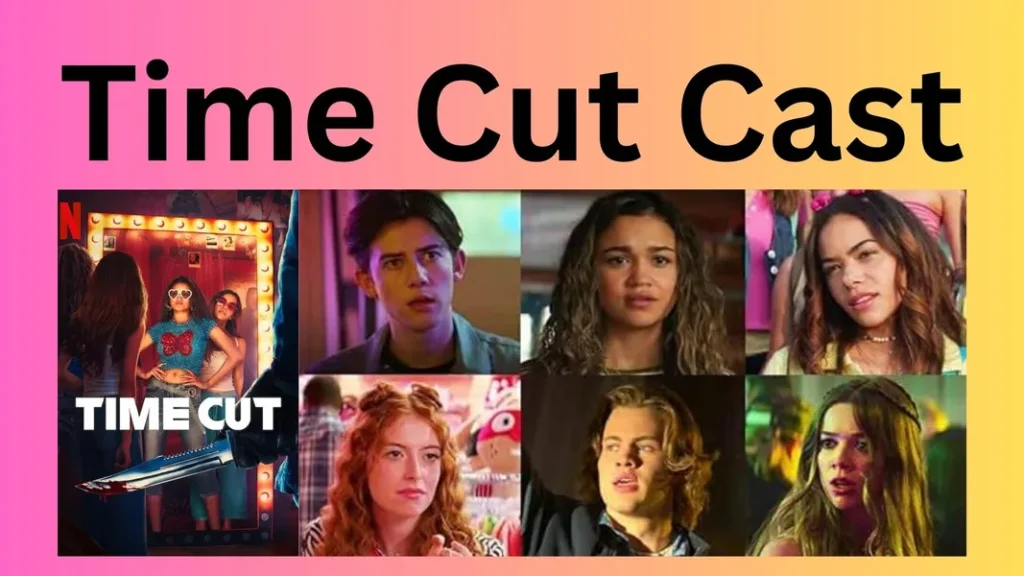In the ever-evolving world of digital content and social media, certain phrases and terms tend to make their way into the mainstream. One such term that has caught the attention of many is “Time Cut Cast.” You might have seen it on your feeds, heard it in conversations, or maybe you stumbled upon it while trying to find something new. But what exactly is “Time Cut Cast,” and why is everyone talking about it?

In this article, we’ll explore everything you need to know about Time Cut Cast, its meaning, its significance, and why it’s gaining so much attention. So, grab a cup of coffee and let’s dive in!
What Is Time Cut Cast?
You might be wondering, “What does Time Cut Cast even mean?” Well, the term itself is a bit ambiguous, and its meaning can vary depending on the context. Simply put, a Time Cut Cast is a term used to describe the process of trimming or editing time in a media or content production setting, such as video editing, podcasting, or even film production. It refers to cutting down excessive content to make it more streamlined, concise, and engaging for the audience.
For example, if you’re creating a video and need to cut out certain sections to improve the flow, you might make a “Time Cut.” This could be cutting out lengthy pauses, unnecessary filler words, or irrelevant content to keep the video snappy and focused.
But, as with many terms, “Time Cut Cast” can have different meanings depending on who you ask. Let’s explore this further.
Time Cut Cast in Video Production
When it comes to video production, the term “Time Cut Cast” can refer to the editing process where editors take a large chunk of raw footage and cut it down to a more polished, shorter final product. The aim here is to maintain the essence of the content while getting rid of any excess or unnecessary material.
Why is Time Cut Important in Video Editing?
Ever watched a video that felt like it was dragging on too long? We’ve all been there. The problem often lies in excessive content that doesn’t contribute to the narrative. This is where a Time Cut comes in. By cutting down on the fluff, video editors can maintain the audience’s attention and deliver a compelling, engaging experience.
The Art of Time Cutting
While it may sound simple, Time Cutting is an art. It’s about knowing which parts of the content can be removed without losing the message or emotion that the video is supposed to convey. Editing out the right parts can make a video feel cleaner, more professional, and ultimately more watchable.
Time Cut Cast in Podcasting
Believe it or not, “Time Cut Cast” also applies to podcasting. Much like in video production, podcasters often record long episodes that are packed with content. However, not all of it is needed. Here’s where Time Cut Cast comes into play.
Editing for Efficiency
Podcasts can run for an hour or more, and not every second of audio is gold. Podcasters use time cuts to remove dead air, stumbles, and tangents that don’t add much value to the listener. The goal is to make sure the episode is engaging from start to finish without losing the essence of the conversation.
Improving Listener Engagement
Just like with videos, podcast listeners have limited attention spans. When you trim down excessive content, you make the podcast more digestible and keep listeners engaged. A shorter, more focused episode can mean more subscribers and listeners coming back for future episodes.
Time Cut Cast in Social Media and TikTok
If you’re active on social media platforms like TikTok or Instagram, you’ve likely come across the term “Time Cut” in a completely different context. It’s no surprise that social media is all about short-form content, and “cutting” time is essential to keeping videos engaging.
TikTok’s Impact on Time-Cutting Culture
TikTok is all about making short, impactful videos that get straight to the point. If you’ve watched a viral TikTok, you’ve probably noticed that the content feels fast-paced and cuts out unnecessary fluff. This is essentially Time Cut Cast at work.
By editing videos to be concise, creators can deliver their message or entertainment without dragging it on too long. It’s about fitting within the short time constraints of platforms like TikTok, where every second counts.

The Benefits of Time Cut Cast
Now that we know what Time Cut Cast is, let’s talk about why it’s such an important tool, especially in content creation.
1. Increased Engagement
As mentioned earlier, attention spans are shorter than ever. Whether it’s a video, podcast, or social media post, people don’t have the patience to sit through lengthy content. Time cutting helps ensure that the most important points are emphasized, keeping the audience engaged from start to finish.
2. Clarity and Focus
By cutting out unnecessary content, creators can highlight key messages more effectively. This leads to greater clarity in communication. Instead of wading through a sea of information, viewers or listeners can focus on the core ideas, making it easier for them to absorb and understand.
3. Improved Production Value
Whether you’re producing a podcast or a video, editing out unnecessary content helps improve the overall quality. The end result is more polished and professional content that resonates better with your audience.
4. Better User Experience
A good user experience is paramount in content creation. Long, meandering content can be a turn-off, but with Time Cut Cast, you can create a more enjoyable experience for your viewers or listeners. Whether they’re watching a video or listening to a podcast, they’ll appreciate the streamlined, to-the-point format.
How to Effectively Use Time Cut Cast?
So, how can you apply Time Cut Cast in your own content? Whether you’re a video editor, podcaster, or social media creator, the process is similar.
1. Know Your Audience
Understanding your audience’s preferences and attention span is the first step. Are they looking for in-depth analysis, or are they more into quick, digestible information? Knowing this will help you determine what to cut and what to keep.
2. Use Editing Software
In video editing, programs like Adobe Premiere Pro, Final Cut Pro, and DaVinci Resolve can help you make precise cuts. For podcasting, tools like Audacity or GarageBand allow you to edit audio tracks with ease.
3. Be Ruthless with Cuts
One of the toughest aspects of Time Cutting is knowing what to remove. Don’t be afraid to cut out sections that don’t add value. Sometimes, less is more!
4. Create Smooth Transitions
When you make cuts, make sure the transitions are seamless. Sudden jumps or awkward edits can break the flow and distract your audience.
5. Keep It Engaging
Even after cutting down your content, make sure it still flows naturally. The goal is to create an engaging experience where the audience isn’t bored or lost, even with the time cuts.
The Role of Time Cut Cast in Storytelling
Whether you’re telling a story through a video, podcast, or social media post, Time Cut Cast plays a huge role in making sure that story is told in the most effective way. Good storytelling is all about pacing, and time cuts help achieve that perfect rhythm. By trimming away distractions, you’re left with the core message of your story, making it stronger and more impactful.
The Evolution of Time Cut Cast: Why It’s Becoming a Trend
In today’s fast-paced digital world, people want content that is quick, direct, and to the point. Platforms like TikTok and Instagram have led the charge in popularizing time-cut content, and now, this trend is making its way into mainstream media, including films, podcasts, and video productions.
With more creators adopting time-cutting techniques, it’s only a matter of time before the trend evolves even further, creating even more exciting ways for us to consume content.

Conclusion
Time Cut Cast is revolutionizing the way we consume content. Whether in video production, podcasting, or social media, cutting out unnecessary content helps keep the audience engaged, focused, and entertained. It’s all about delivering concise, high-quality material that resonates with your audience.
So, whether you’re editing a video or fine-tuning a podcast episode, remember that less can often be more. Time Cut Cast is here to stay, and it’s only going to keep evolving, making content creation better for everyone.
FAQs
1. Is Time Cut Cast only for video content?
No, Time Cut Cast applies to many forms of content, including podcasts, social media posts, and more.
2. Can Time Cut Cast improve my video’s engagement?
Absolutely! By trimming excess content, you can create more engaging and focused videos that hold your audience’s attention.
3. Do I need special software to make time cuts?
For video editing, software like Adobe Premiere Pro or Final Cut Pro can help. For podcasts, tools like Audacity or GarageBand are great options.
4. How do I know what to cut in my content?
Knowing your audience is key. Focus on cutting content that doesn’t contribute to the overall message or story.
5. Can Time Cut Cast be used in social media posts?
Yes! Social media platforms like TikTok thrive on short, impactful content, making Time Cut Cast essential for creators.